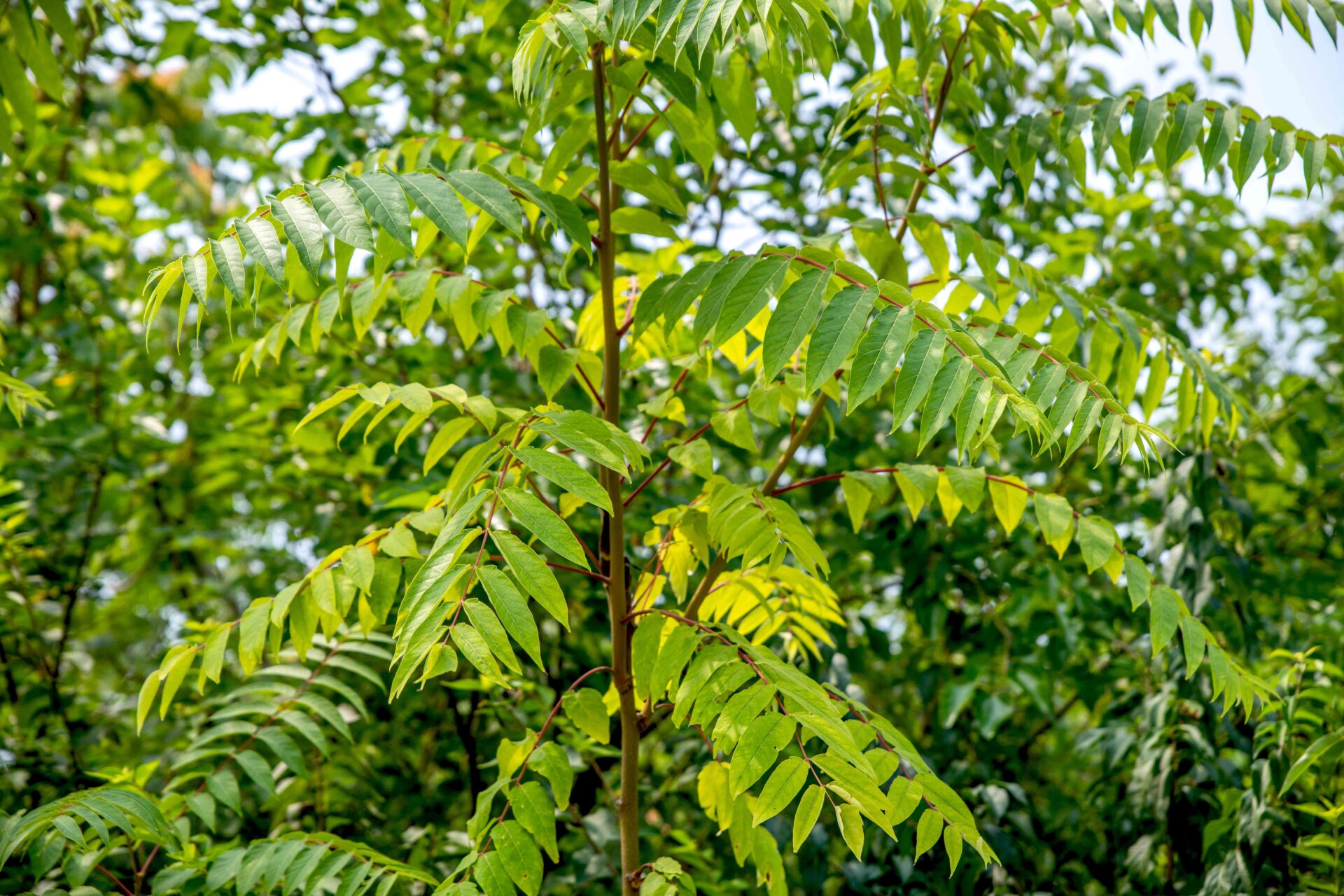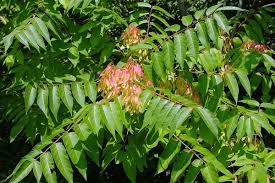Tree of Heaven (Ailanthus altissima) is an invasive species wreaking havoc in New York City. This fast-growing tree aggressively outcompetes native plants, disrupting the city’s delicate ecological balance, and is essentially a weed. Its extensive root system wreaks havoc on sidewalks, buildings, and other infrastructure, causing cracks and uneven surfaces. Furthermore, the tree releases toxins that inhibit the growth of other plants, hindering the city’s efforts to create green spaces and promote biodiversity. The foetid odor emitted by its crushed leaves is another unwelcome addition to the urban environment. If you’ve spotted Tree of Heaven on your property, it’s important to take action to stop its spread and protect New York City’s ecosystem.
How to Stop the Tree of Heaven From Spreading
The most effective strategy for eradicating the Tree of Heaven involves using systemic herbicides, which are absorbed and distributed throughout the tree’s system. There are several methods of application:
- Herbicide Treatment:
- Choosing the Right Herbicide: Select systemic herbicides that are known for their efficacy against the Tree of Heaven, like glyphosate or triclopyr.
- Timing: Apply herbicides in mid- to late summer when the tree is actively transporting nutrients to its roots. This ensures the herbicide is carried throughout the tree, maximizing its effectiveness.
- Application Methods: Depending on the size and location of the tree, choose from foliar spraying, basal bark application, or the hack-and-squirt method. Each method has its specific advantages and is suited for different tree sizes and situations.
- Physical Removal:
- Small Trees and Seedlings: For young trees or seedlings, physical removal might be effective. This can include digging out the roots or pulling the tree out if it’s small enough.
- Large Trees: For mature trees, especially those over 50 feet tall, professional removal is recommended. Tree services have the necessary equipment and expertise to safely remove large trees, ensuring that the entire structure, including roots, is effectively dealt with.
- Continuous Monitoring and Follow-Up:
- Regular Inspection: Check the treated area regularly for signs of regrowth.
- Secondary Treatment: Be prepared for follow-up treatments, as it’s common for the Tree of Heaven to resprout from remaining roots.
Tree Removal Options
In addition to herbicidal treatment, physical removal of the Tree of Heaven is another viable option, especially for larger trees, which can reach heights of over 50 feet, making them a challenge for DIY removal:
- DIY Removal: For smaller trees, homeowners can consider removing the tree themselves. This requires caution, the right tools, and an understanding of safe removal techniques.
- Professional Tree Services: For larger trees or for those without the necessary equipment, hiring a professional tree service is recommended. These services have the expertise and equipment to safely remove tall and large trees, ensuring that the entire tree, including its extensive root system, is effectively eradicated.
The Ailanthus Tree of Heaven is an invasive species and technically a weed. If you spot this on your property and live in New York City, call us, and we can remove it. We do free on-site inspections for those who live in the Bronx and Manhattan.

Identifying the Tree of Heaven
This invasive tree, native to China and now prevalent in New York and other parts of the U.S., can be distinguished by several key characteristics:
- Leaves: The Tree of Heaven boasts long, compound leaves reaching three feet long. Each leaf comprises smaller leaflets lined up in pairs, giving it a distinctive feather-like appearance.
- Bark and Trunk: Young trees exhibit smooth, pale grey bark, which becomes rough and more furrowed as the tree matures.
- Odor: A significant identifier is the strong, unpleasant odor the leaves emit when crushed—often described as similar to rotten peanuts or burnt rubber.
- Seeds and Flowers: The tree produces clusters of small, yellowish-green flowers, which develop into flat, twisted, wing-like seeds, contributing to its rapid spread.

The Ailanthus’s Negative Impact in New York
In New York and elsewhere, the Tree of Heaven’s invasive nature leads to several ecological and health concerns:
- Ecological Dominance: Its aggressive growth and allelopathic properties, where it releases chemicals to suppress the growth of surrounding plants, significantly impact local ecosystems. This disruption can lead to decreased biodiversity and the displacement of native species.
- Health Concerns: The tree’s pollen is a known allergen, and contact with its sap can cause skin irritation. In more severe cases, exposure can lead to heart inflammation, posing a real threat to public health.

Challenges in Controlling Ailanthus
The resilience of the Tree of Heaven makes it a formidable opponent:
- Extensive Root System: Its roots spread far and wide, enabling the tree to dominate large areas quickly.
- Rapid Growth and Resprouting: Even when cut down, the tree’s ability to resprout from its roots means that it can quickly re-emerge, often more substantial than before.
Persistence in Treatment
Eradication demands ongoing attention:
- Monitoring: Regularly check the treated areas for signs of regrowth.
- Follow-up Treatments: Be prepared to apply additional treatments as needed.
Get a Tree Service
Dealing with the Tree of Heaven, especially in urban landscapes like New York, requires dedication, knowledge, and a proactive approach. By understanding its characteristics, impacts, and control strategies, you can effectively manage this invasive species and contribute to the health of your local ecosystem. If you live in the Bronx or Manhattan, please give us a call. We remove this ‘weed’ often, and effectively.